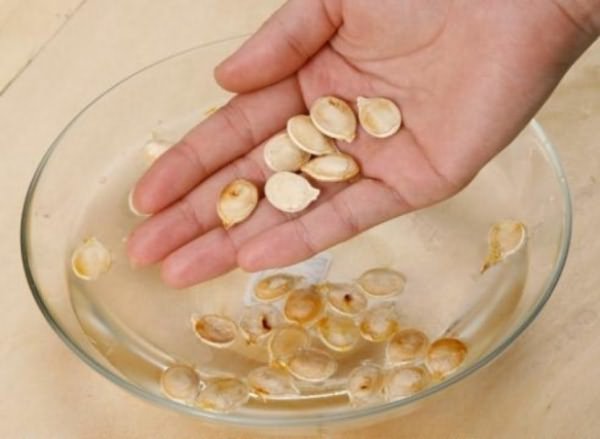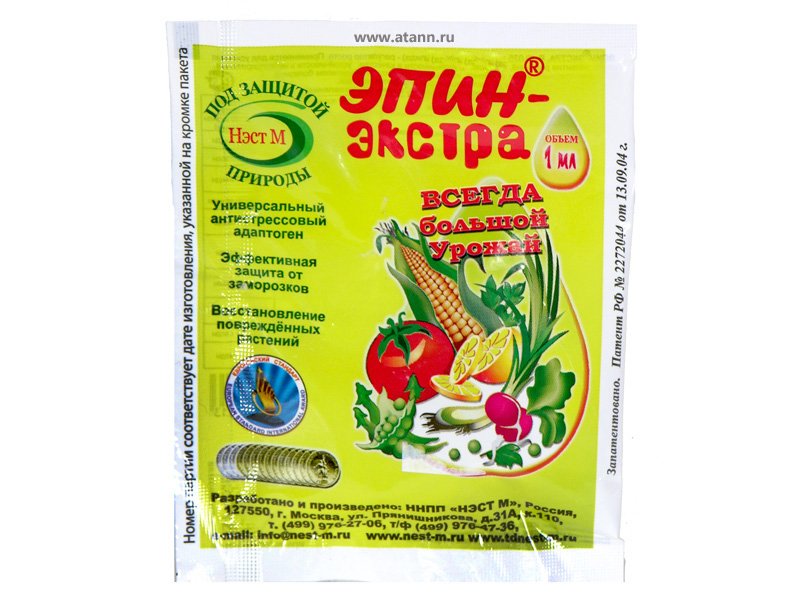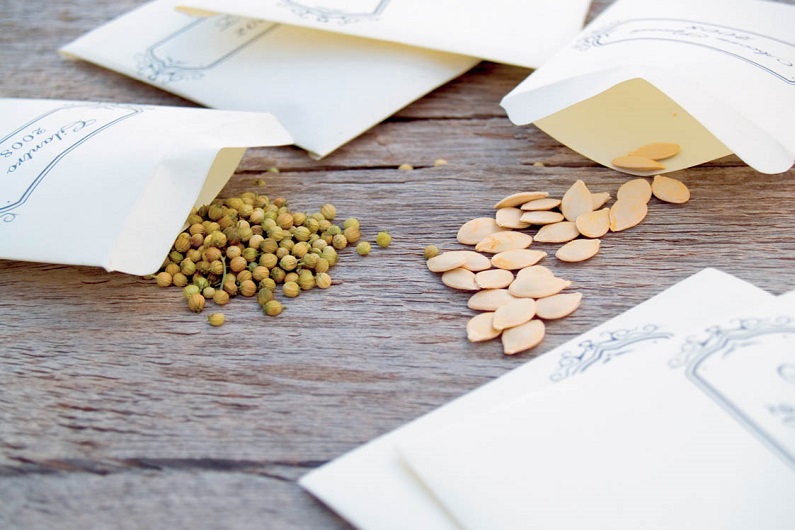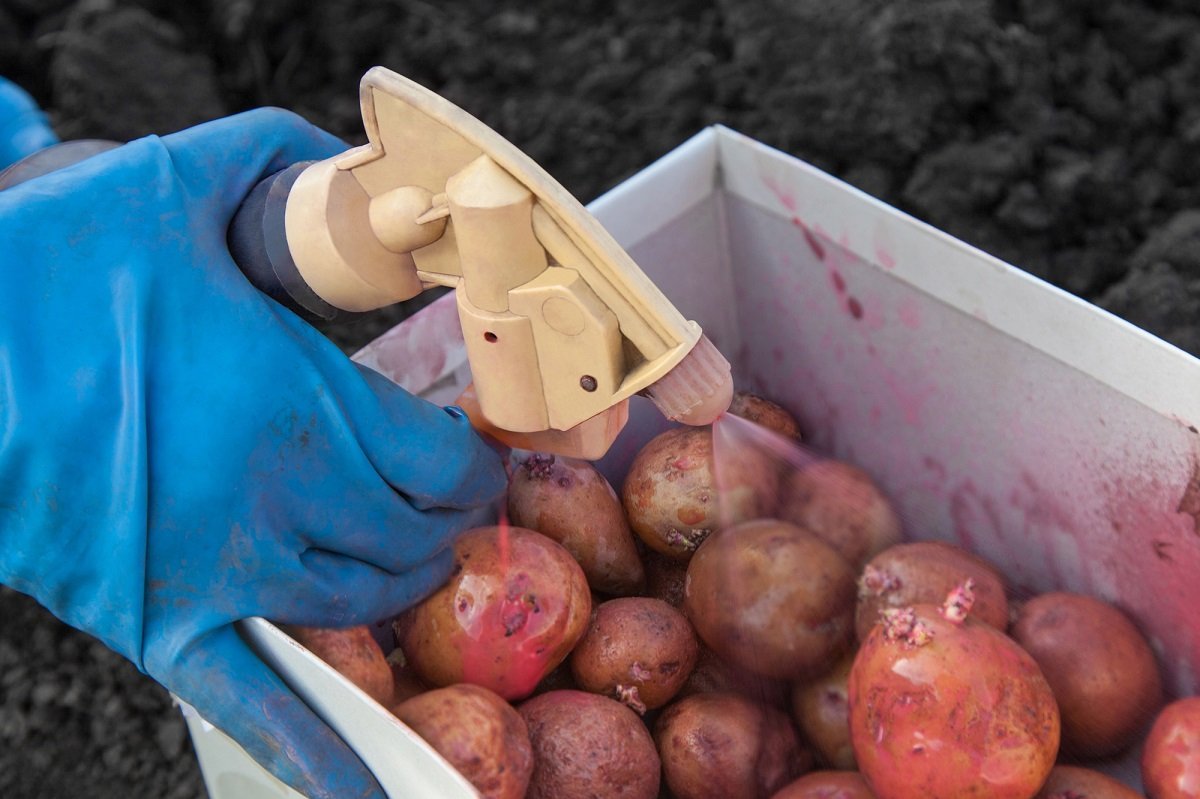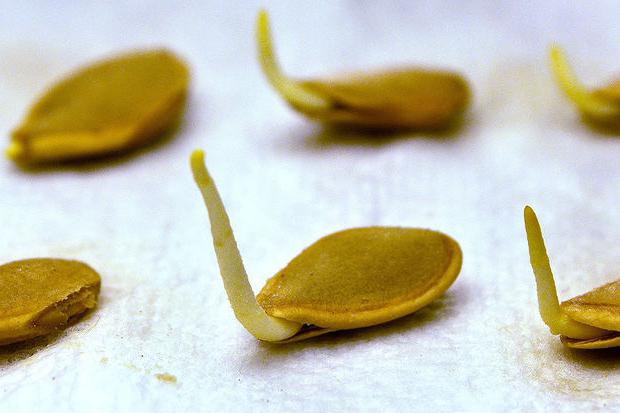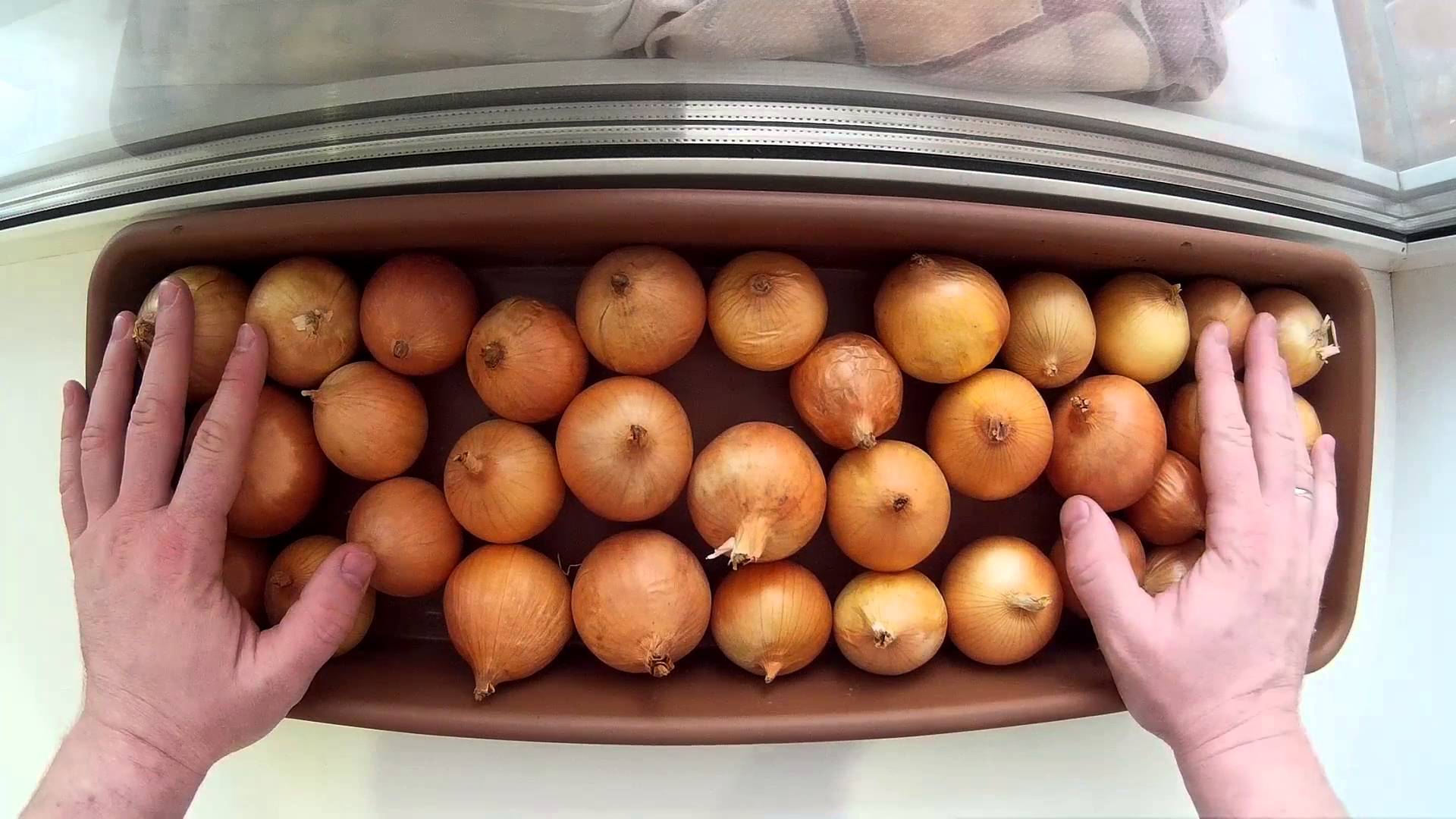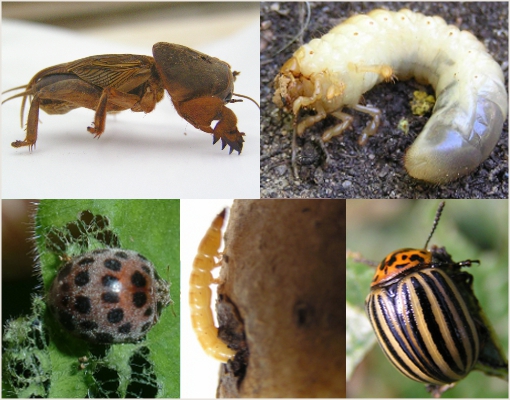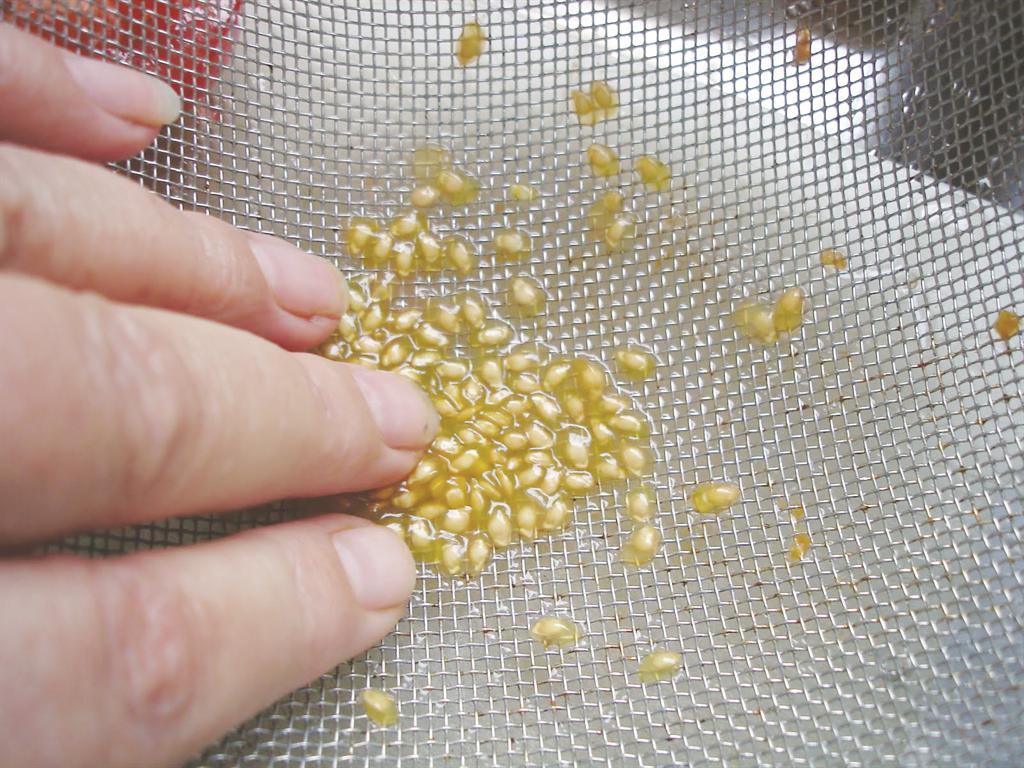Content:
Presowing seed treatment is of great importance for the quality and quantity of the cucumber crop. Agronomists have developed many techniques and techniques to prepare seed for the upcoming planting on seedlings or open soil, for example, soaking, scarification, disinfection and calibration.
Strongly dried cucumber seeds slowly absorb moisture, respectively, uneven seedlings will be observed. In this case, the seeds just need to "awaken" before planting.
Soaking cucumber seeds before planting
In the process of growing seedlings, the most difficult is the period between sowing and the first shoots. It is extremely important to properly soak the planting material to shorten this length of time. In addition, it will be possible to make a rejection, since low-quality seed will not hatch or sprouts will appear much later.
How to soak cucumber seeds before planting:
- you need a small piece of cloth and a plastic bag. The fabric is abundantly moistened with warm water, after which the planting material is neatly laid out on one side. The seeds are covered with a free edge, everything fits into the bag. The seeds should lie in a warm place, they usually germinate in a day.
- instead of a plastic bag, a glass jar is used, which is hermetically sealed with a lid. Planting material is placed in a wet matter, after which it is placed in a jar. Store in a warm place for 3-4 days, periodically airing the container.
- express method. Seeds are placed in a piece of gauze and dipped in high-quality vodka for 10-15 minutes. As soon as the planting material dries well, it must be sown.
Seed preparation
The acquired planting material for cucumbers must be poured onto a flat surface and carefully examined. Irregular, small or soft grains should be set aside immediately. Good quality seeds should be firm and large. To make sure that all the defective seeds are selected, you can pour good seeds into a glass of water, if any of them float, it is not recommended to use it.
Experienced agronomists recommend warming the seeds well before planting cucumbers. To do this, they are poured onto a tray and placed on a radiator. If the temperature exceeds 35 degrees, it should be limited to a week, if about 25 degrees, the duration of warming up is 1 month.
Processing and disinfection
If the seeds are left untreated, pathogens / pathogens cannot be pickled, this increases the risk of crop disease and loss of yield.
The most effective methods of processing and disinfecting planting material:
- Heat treatment. The planting material is warmed up to fight viruses and diseases, all pathogenic microflora dies. Cucumbers are thermophilic plants, therefore, heating the seeds will further stimulate their germination.At home, only one method of heat treatment is available - pour boiling water over the seed and place it in a thermos, having previously wrapped it in gauze.
- The use of potassium permanganate. It is noted that of the existing etching compositions, potassium permanganate has the largest spectrum of action. To prepare the solution, take 1 gram of manganese and dilute it in 100 ml of warm water. The solution will turn almost black. It is inappropriate to use weak concentrations of a substance, they are ineffective. Beforehand, all the grains must be separated from each other, the stuck together units may not pickle properly. The seeds are placed in a gauze cloth and placed in the solution for 20 minutes. After - washed with boiled water at room temperature.
- Etching with hydrogen peroxide (2-3%)... The solution must first be heated to 40 degrees. Leave the seeds in the solution for no longer than 8 minutes.
- Boric acid application. For disinfection, you will need to first prepare a solution, you will need 0.5 tsp. boric acid and 1 glass of water. The liquid temperature should not fall below 25 degrees. The seed is soaked for 2-3 hours. After that, the grains must be washed well under running water.
Soaking instructions
It is recommended to use wide saucers or plates for soaking the planting material. The biological solution or water used must be prepared in advance. The easiest method is to soak with gauze.
One half of the gauze piece is placed on a container, the seed is carefully laid out on top. With the second half of the material, the seeds are covered and filled with liquid.
The soaking procedure does not require special skills; even a novice agronomist can handle it. The dishes with the soaked seed should be placed in a warm and dark place, the air temperature in the room should not fall below 20 degrees. To create a greenhouse effect, it is recommended to cover the container with glass, but if it is not there, you can take an ordinary plastic bag. The seeds will need about a day to swell.
How to soak seeds so that they germinate faster
The first step is to take care of the quality of the water used. It is recommended to give preference to tap water, settled, rain or melt water.
To achieve maximum results, agronomists often use biologically active ingredients. To use biostimulants effectively and completely safe. Such formulations not only stimulate the active growth of the plant, but also strengthen it, allowing you to grow healthy, more seasoned and strong seedlings.
One of the most common formulations that is used before landing is Epin. The unique composition of the preparation activates the protective functions of seeds against aggressive environmental factors. In addition, it increases the "stress resistance" of the planting material in case of viral diseases, fungal attack, soil depletion, lack of sunlight, etc.
Is it possible to test the germination of seeds before planting in the ground
To check the germination of seeds, certain conditions must be created for them, since they pass from the resting phase to the waking phase.
To check, take about 10 seeds and put them in one layer between porous materials: napkins, gauze or toilet paper. This combination is placed in a container and filled with warm water.Top up it as needed. A week after germination, they count how many plants should turn out. If about 3 seeds have sprouted, it is impractical to use such planting material.
Another proven method is calibration. The seeds should be kept in water with table salt for several hours. The salt concentration should be 3-5%. Viable seed will settle to the bottom of the container, and unusable seeds will float to the surface. After checking, the seeds must be thoroughly rinsed and dried.
To test the germination of seeds of cucumbers of hybrids and ordinary varieties, sawdust is also used. From intervals of 30 minutes, pour the sawdust with boiling water until they swell. The resulting material is transferred to a separate container, and the cucumber seeds are placed in it at a short interval. The seed is covered with sawdust and compacted a little. This is very important, otherwise unnecessary roots will form. It is recommended to maintain the optimum room temperature - 25-27 degrees above zero. After a week, you can see how many of 10 seeds have sprung up.
Thanks to the above methods, it will be possible to reliably find out the germination of cucumber seeds, and choose those that will provide the family with a harvest.
Cucumbers can be eaten fresh, added to salads, and canned for the winter. This culture is quite capricious, but having mastered the basic rules of planting and care, it will be possible to collect a rich harvest. Through trial and error, an agronomist can become a real specialist.
